| Classic digital technologies | Analogue chips and devices | Companies and chip manufacturers |
Intel/Altera |
AMD/Xilinx |
Lattice Semiconductor |
Intel - (Altera)
| |
Terasic
DE10-Lite (User manual) |
 |
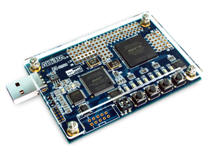 |
Terasic MAX II Micro Kit (User manual) Chip MAX II: EPM2210F324C3 (drivers USB Blaster) |
|
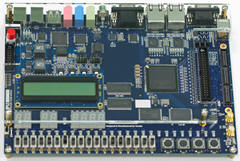 |
Terasic
-DE2-115 Board (User manual,
board's block diagram) |
|
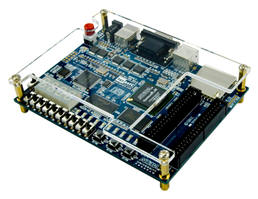 |
Terasic
DE0 Board Chip:
Cyclone III:
3C16F484C6N |
 |
 |
Altera - Terasic -DE2 Board Chip: Cyclone II EP2C35F672C6 |
Intel/Altera |
AMD/Xilinx |
Lattice Semiconductor |
 |
Nexys2 FPGA Board User manual and software ISE and ISim to implement and simulate the project (currently this software v. 14.7 is executed in a VM in Windows 10). The Digilent Adept application to program the device. Chip (FPGA): Spartan-3E XC3S500E-FG320 Schematics and documents (1). ISIm wave colour scheme with white blackground. |
|
 |
CoolRunner-II CPLD Starter Board User manual and ssoftware ISE and ISim to implement and simulate the project and the Digilent Adept to program de device. Chip (CPLD): XC2C256-TQ144 - 7 Documents (1) |
|
Intel/Altera |
AMD/Xilinx |
Lattice Semiconductor |
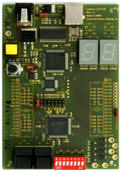 |
HWD-LC4128V Die Experimentierplatine für die Digitaltechnik Lattice ispMach 4000 (CPLD) Chip: ispMach4128V TQFP100 Schematics and documents (1), (2), (3) (driver USB) |
|
 |
USB Starter Evaluation Board MachXO (FPGA) Chip: LCMXO640C-3TN144C |
|
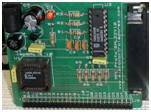 |
Chip: ispGAL22V10 GAL22V10 protoboard details (1), (2) |
1-digit BCD counter |
Intel/Altera |
AMD/Xilinx |
Lattice Semiconductor |
Microchip |
Microchip
This is a Microchip brochure that shows the many tools involved in developing microcontroller designs.
Chips and tools: PIC16F/PIC18F and AVR ATmega architectures, the integrated development environment (IDE), C language compiler XC8, microcontroller simulation (Proteus - VSM), and training and prototyping boards (PICDEM2 plus, AVR mega 16/32 starter development board, Arduino, etc.).
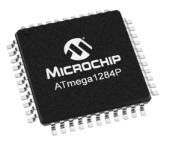 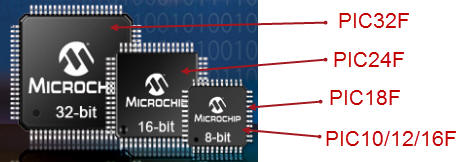 |
Fig 3. Families of Microchip microcontrollers. Atmel has become a Microchip division with all its microcontroller portfolio embedded in the Microchip web. |
Preferred devices (depending on the semester) and IDE tools to be installed in your portable computer:
|
|
|
|
|
|
Prototyping boards, simulators, programmers and in-circuit debuggers:
 |
MPLAB SNAP debugger / programmer |
Example to start Lab10 {Counter_BCD_1digit} |
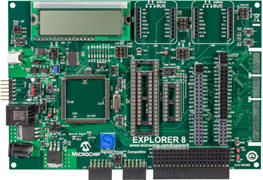 |
User manual, schematics and sample projects from Microchip. IDE: MPLAB-X. Compiler: XC8 C Compiler. |
Example to start Lab10 {Counter_BCD_1digit}
|
 |
PICkit 3 In-Circuit programmer and debugger. (ref.) |
|
 |
In-circuit debugger and programmer tool ICD 3 tool: (ref.) |
|
 |
||
 |
Example to startLab10 {Counter_BCD_1digit} |
|
 |
User manual, schematics and sample projects from Microchip. Chip: PIC16F877A (the new replacement for the PIC16F873A, the PIC16F883 is available in Proteus) |
Example to start Lab10 {Counter_BCD_1digit} |
 |
PICDEM2 simulated in Proteus-VSM Board with PIC18F4520 Board with a PIC18F46K22 Demo default for the PIC16F877 (old board) |
Example for PIC18F46K22 |
 |
This is another example of board for discovering PIC microcontrollers. EasyPIC-40. (manual, schematic) |
|
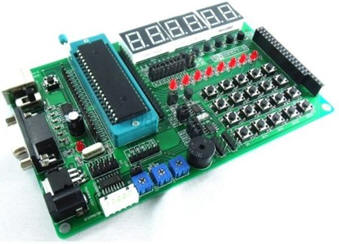 |
PIC16F 8-bit MCU Development Study Learning Board Kit. CSP (PICkit 2 or similar) is required to program the chip. |
Schematic and example code. |
Arduino materials.
 |
Documentation. |




